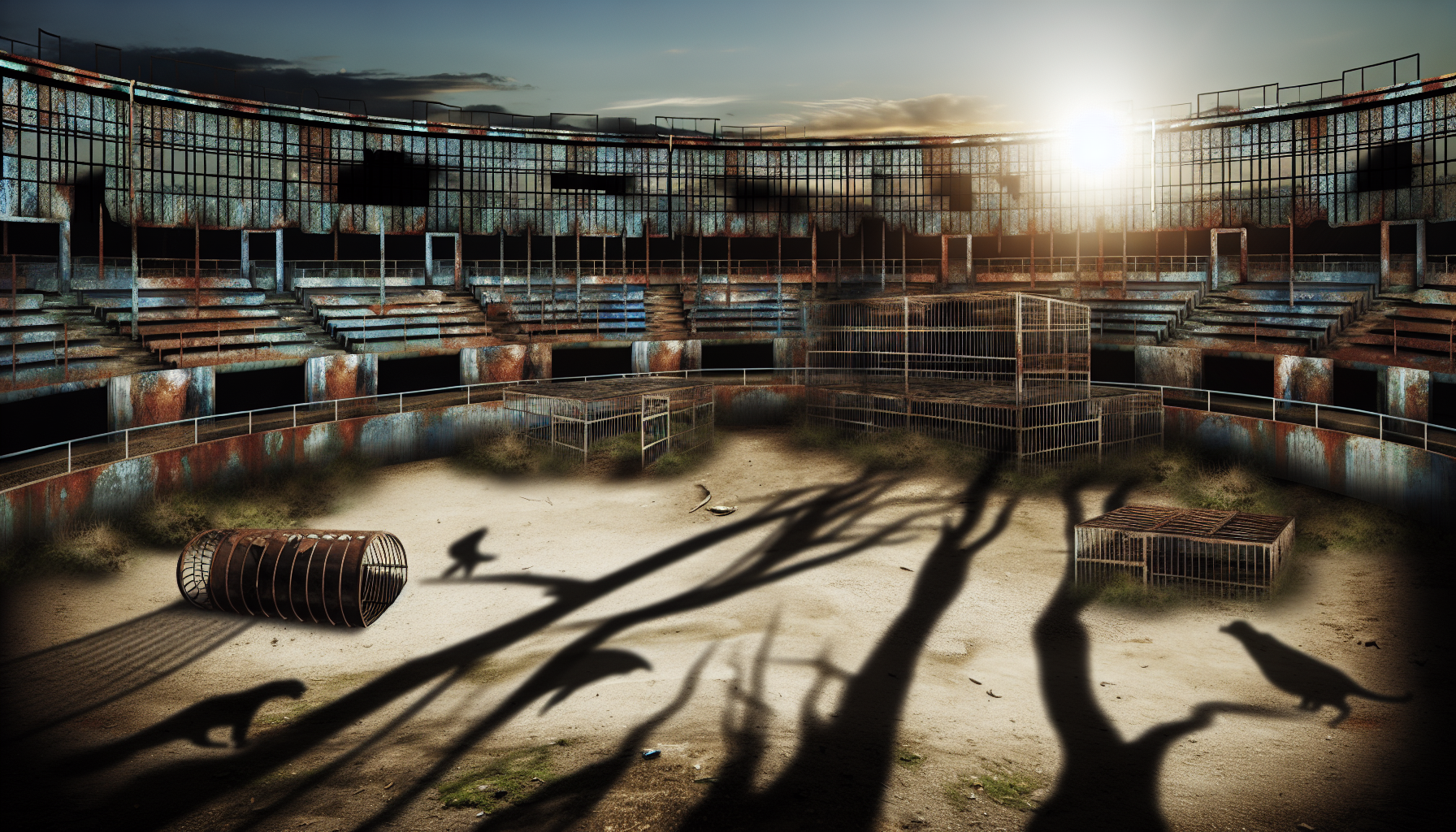Amidst the forgotten silence where the raucous cries of animals and the jubilant laughter of children once mingled, now lies the ghostly echo of wildlife shows. The spectacle that was, is no longer; it has transformed into a theater of eerie calm, where the only applause is the solemn whisper of the wind through abandoned stands.
The Great Vanishings – a term coined by conservationists, yet no headline could ever sufficiently encapsulate the magnitude of the tragedy that has befallen the natural world. Our explorations into what remains of the wildlife shows are not for the faint-hearted – a glimpse into the once-vibrant arenas now yields nothing more than an acrid testament to neglect.
“Animal acts,” an archaic phrase that parlays images of majestic creatures performing under the big tops of our memories. But as the balance shifted, and our ecosystems crumbled like the disappearing ice caps, so too did the artistry of the animal kingdom. It is a solemn reminder of our role in this environmental dystopia; where human hubris and ecological ignorance scripted an ending to shows no writer would dare pen.
Plumes of dust settle upon seats where families once watched wide-eyed the leaping lions, pirouetting pachyderms, and the show-stopping plunge of the king of the jungle into the brisk waters of an artificial oasis. These structures are more archaeological than architectural, crumbling relics of a past era where wildlife exploitation was entertainment, not elegy.
Indeed, our incursions into these relics are rife with the palpable absence of life, a somber journey into zones where even the hardiest of beasts have bid their final curtain calls. In one abandoned amphitheater, vines creep up where spotlights once directed the audience’s gaze, sunlight peeking through cracks in a dilapidated dome – a dramatic, natural reclamation.
The specters of these shows haunt our present: the spectral shapes of orcas forever swimming in chlorinated circles; bears balancing unnaturally on barren bicycles; the mournful lilt of a lone elephant’s silhouette against the fading circus poster. Markets for such captivity have vanished as the animals have, and we’re left to ponder the void both disappearances leave behind.
Gone are the times when people marveled at the wonders of fauna filtered through the bars of captivity. Today’s witnesses walk through graveyards of grandeur, sites overripe with the symbolism of a fractured relationship between homo sapiens and their animal kin.
While the haunting beauty of nature taking back its stages bears a poetic justice, one cannot help but feel a swell of sorrow for what this reclamation represents. Not merely a reclaiming of land, but of missed chances, of tales that ended not in moral lessons, but in remorseful epitaphs – a bleak reminder of what we have squandered in our stewardship of the Earth.
Documentarians of Decay, akin to the explorers of sunken cities, catalog these spaces of spectral shows. There is a robust academic curiosity, a yearning to understand how quickly nature can undo the delicate tapestry of human intervention. These researchers chart the downfall of wildlife shows, a history lesson steeped in warning and despair. Every moth-eaten costume, every rusty cage, a chapter in an ongoing saga of environmental apocalypse.
In conclusion, what remains of wildlife shows is a morbid monument to missteps – carcasses of a consuming culture that fed on the spectacle of subjugation. As we ponder the remnants of these spectacles, we should heed the call for reflection and action. In the shadow of these specters, we must conjure not the spirits of entertainment’s past, but rather the resolve to restore balance and respect to the natural world – even though, within the pages of this publication, we admit to the stark reality that in this imagined dystopia, hope remains as caged as the specters we mourn.
